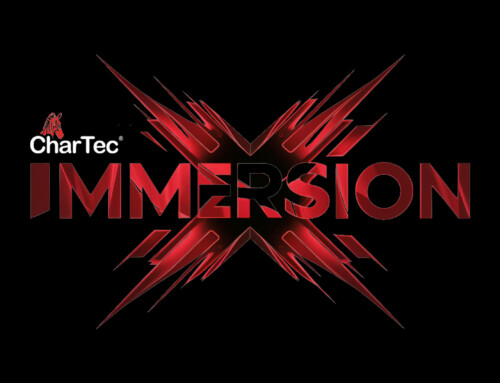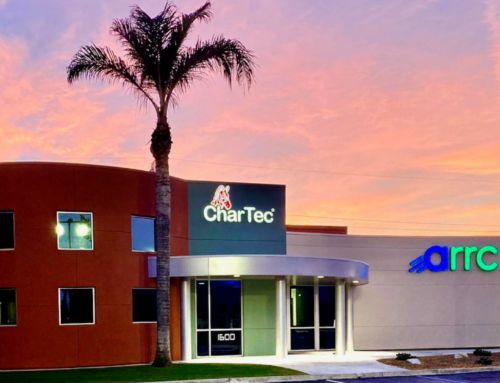You know that feeling you get when you try to talk to non-technical people about technical things? It feels like you’re speaking to a brick wall, except this brick wall has the ability to make things incredibly awkward and uncomfortable.
When we speak to our members about business operations, we tend to receive this same reaction, but really, it’s not all that surprising to us.
Operations isn’t usually something people are naturally good at or something people can fully understand after a few days of training. And it certainly isn’t as sexy as sales or as appealing as marketing. Despite all of this, though, operations is absolutely critical to your success as a business.
The COO of ARRC Technology and CharTec’s operations consultant, Shane Swanson, says –
In order to keep ARRC as successful as it currently is and always has been, we abide by the 4 P’s of any good business – People, Process, Productivity, and Planning. Together, these 4 Ps create structure and regularity – which ultimately leads to consistently optimal results.
At CharTec, we unequivocally agree with the 4 Ps of any good business, and we believe it to be the necessary foundation for a successful business. So let’s go ahead and dive into the first of the four Ps.
People
As you probably know, people are an essential part of running a business, and they can make this feat really easy or really difficult. You need your people to do their job and to keep your clients satisfied, but before they can do this, you need to successfully establish the following six features –
A Defined Culture
Without a defined culture, then you’re basically like a single person with no type – you’re just going to date anything with two legs until you find something that sort of fits. This mentality will only make the process of finding a qualified candidate for your business ridiculously hard.
Make sure you have a defined culture that describes who you are as a company and keeps your beliefs visible and active throughout the entire organization. Use this to find people that fit into your business model and with your current staff.
A Proper Org Chart
Org charts are extremely good at maintaining balance within a company. A proper org chart – printed out, detailed, and thorough – will show you three important things: the big picture, the stability, and the potential. From here, you can determine if the weight is distributed appropriately and if you have a solid foundation with which to grow from.
A Thorough Job Description
Many companies fail to create thorough job descriptions, and in some cases, fail to create one at all. But a job description is critical if you tend to ‘expect’ things from your employees – which it’s safe to assume you do. Without a thorough job description, no one will know what’s expected of them, and if this is the case, how will you ever be able to hold anyone accountable for their job?
A Complete DISC Assessment
At CharTec, we believe in personality assessments, and for us, this involves DISC, specifically. Before the first interview, we like to have candidates take a DISC assessment. This test will help us determine if their personality is a fit for the position – for instance, are they typically more dominant like a salesperson or are they geared towards compliance like a technician?
You can use this information during the interview to learn more about the person. And if their assessment isn’t a traditional fit for the given position, this is your opportunity to find out why. It’s not the Holy Grail of hiring, but it can make a huge difference as far as retention rate is concerned.
A Legitimate Hiring Process
The funny thing about a first date is that you can get a really good or really bad impression about someone and then find that later on, your first impression was completely off base. And when it comes to the hiring process, this is no different. It’s difficult not to jump to conclusions when you’re in need of a new hire – because, usually, you’re desperate to fill the position – but it’s important not to do this.
Our hiring process typically involves a phone interview (proper grammar and social skills), a DISC assessment (personality fit), the 1st interview (first date), the 2nd interview (skillset determination), and the 3rd interview (team member involvement). The job offer and roadmap follow if the decision to hire the candidate is made.
In reality, this whole process could take less than a week, but what it does, is give you the opportunity to test a person from multiple angles and to get a real feel for someone. And plus, the more you interact with someone, the more comfortable they become – which is a good thing. The more comfortable they are, the more likely they are to spill the beans.
A Feasible Career Path
No person in your organization will feel satisfied with their position for too long if they don’t feel like growth is attainable. To avoid this, we provide our employees with a feasible career path that shows them how they can grow, what this growth involves, and what will stem from any actions made towards growth. Give them space to play, things to learn, and ways to grade themselves, and reward them with something when you see legitimate progress – like a bonus or promotion. The more you encourage growth amongst your employees, the more growth your business will experience.
Similar to most everything in ops land, the 4 Ps requires a great deal of explanation, and in a few weeks, we’ll follow up with the second P – Process. Process guarantees things will be done exactly how you want them to be done – ultimately, it ensures consistency and drives efficiency. However, if you’d like to learn more about it now, feel free to watch a recording of Shane Swanson’s webinar on the first 2 Ps. You can find the recording here.







Leave A Comment